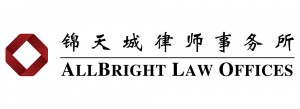The implementation of China’s Export Control Law since 1 December 2020 and the issue of its first white paper on export control on 29 December 2021 reflect China’s strategic and legislative focus and determination on export control governance. This article focuses on enterprises’ legal liability for violating the Export Control Law and how best to address customs compliance risks.
CIRCUMSTANCES OF VIOLATION
Articles 33 to 38 and article 44 of the Export Control Law set out 10 circumstances of violation, including failure to obtain business qualification, exporting controlled items without permission or beyond the scope of permission, forging, altering or trading in the Licence for the Export of Goods, and trading with importers or end-users on the control list.
ADMINISTRATIVE LIABILITY
Administrative penalties mainly include warnings, orders to cease illegal acts, confiscation of illegal gains, fines, orders to suspend business for rectification, revocation of export business qualifications, and prohibition or restriction on export business activities. Violations may also be included in credit records.
CRIMINAL LIABILITY

Senior Partner
AllBright Law Offices
If an export control violation constitutes an offence, the offender will be held criminally liable under provisions of the Criminal Law.
Violations of the Export Control Law may involve other offences such as smuggling, illegal business operations, divulging state secrets, and forgery, alteration, and trading of official documents, certificates and seals of state organs.
If a violation of the Export Control Law is identified as an offence, criminal liability may be incurred in the form of fines, confiscation of property, life imprisonment or a fixed-term imprisonment.
The Export Control Law’s tougher provisions on liability for violations reflect China’s strategic and legislative response to the current international landscape. Fines can be up to 20 times the amount of illegal gain, and the export qualification of the controlled items can be revoked.
The inclusion of offences in credit records may result in the downgrading of an enterprise’s customs credit rating to a dishonest enterprise, or even a seriously untrustworthy enterprise, with all-round, cross-sectoral and disastrous consequences for the enterprise’s operations. Other than the enterprise, individuals (officers and others directly responsible personnel in the enterprise) may be held administratively or even criminally liable for violations of the Export Control Law.
COMPLIANCE RISKS AND MEASURES

Senior Legal Counsel
AllBright Law Offices
An effective compliance mechanism is conducive to preventing compliance risks and reducing legal liability. Establishing a sound compliance system to prevent or mitigate operational risks is strongly advocated by authorities, and can be a factor to mitigate legal liability, which has been recognised in legislation and guidance documents.
An enterprise that identifies underpayment or omission of tax or other violations of customs regulations in its import and export activities via self-inspection may take the initiative to disclose it to customs. If it is determined by customs to be an active disclosure and in line with the prescribed circumstances, customs may reduce its liability, specifically by including no administrative penalty, reduced or mitigated penalties, remission of overdue fines and no credit rating downgrade.
The Ministry of Commerce’s Announcement No. 10 stipulates: “If the violator of regulations on export control of dual-use items has taken the initiative to eliminate or mitigate the harmful consequences of the violation, the administrative penalty shall be reduced or mitigated in accordance with the law.” In other words, if an enterprise establishes an export control compliance system with reference to the principles stipulated in announcement No. 10, and takes timely remedial measures in accordance with the compliance system in the event of violations, it can claim for reduced or mitigated administrative penalties.
An effective compliance mechanism helps enterprises enjoy licensing convenience. “Convenience for law-abiding enterprises and punishment for illegal enterprises” is the core concept of customs’ enterprise administration system. Customs provides authorised economic operators (AEOs) with many facilitation measures such as simplified procedures and formalities, reduced frequency of audits and inspections, and tax incentives. Dishonest enterprises, once included in the list of seriously untrustworthy enterprises, may be subject to inter-departmental disciplinary measures. Announcement No. 10 stipulates that, “based on the status and operation of the internal compliance mechanism, export operators shall be given appropriate licensing facilitation”.
The basic elements of an effective compliance mechanism. Announcement No. 10 sets out nine basic elements required for the internal compliance mechanism of export control, namely: formulating policy statements; establishing an organisational structure; comprehensive risk assessment; review procedures; emergency measures; education and training; sound compliance auditing; preserving data files; and preparing and updating compliance manuals.
SUMMARY
Enterprises must maintain attention to compliance requirements in different managerial areas and by different regulatory authorities. Even when adhering to compliance operations, it is still common for them to be overwhelmed by often complicated and confusing situations, such as overlapping responsibilities between departments and repetitive managerial functions. However, taking steps to establish an internal compliance mechanism is the fundamental solution to all difficulties.
An effective compliance mechanism is not only a legal requirement but also the key for enterprises to enjoy licensing convenience and enhance their overall competitiveness. It is also an effective means for enterprises and individual managers to prevent compliance risks or mitigate liability for violations.
Enacting an effective compliance mechanism is a process of continual exploration, review and adjustment. Enterprises can, taking into account their real-time status and development potential, refer to the guidance and framework structure in announcement No. 10 or the customs’ AEO standards to embed compliance elements of export control into corporate systems. That enables them to make full use of on-hand experience and existing management structures.
Enterprises’ attitudes and actions toward compliance need to be visible, usually in prepared compliance manuals. A manual shows an enterprise’s compliance results, can be used as evidence the enterprise has fulfilled its compliance obligations, and is helpful internally for staff training and operations.
Jia Xiaoning is a senior partner and Ning Jing is a senior legal counsel at AllBright Law Offices

AllBright Law Offices
11/F and 12/F, Shanghai Tower
No. 501 Yincheng Middle Road
Pudong New Area
Shanghai 200120, China
Contact details:
Tel: +86 21 2051 1000
Fax: +86 21 2051 1999
Email:
www.allbrightlaw.com





















